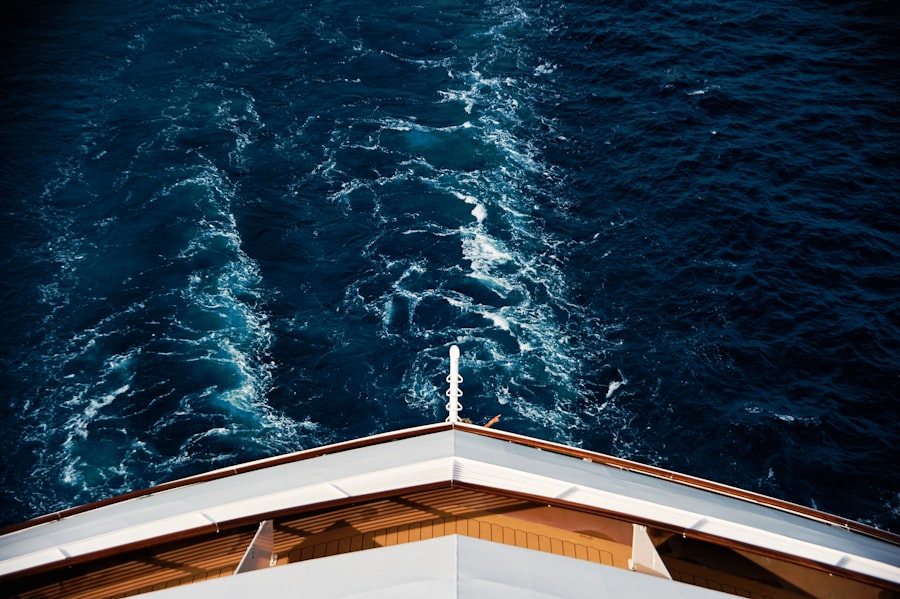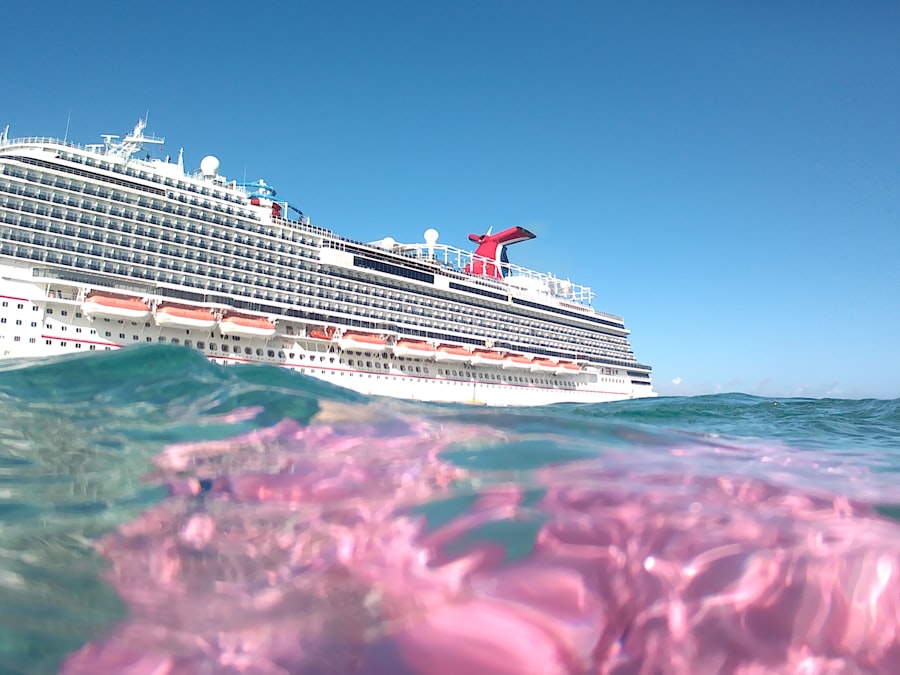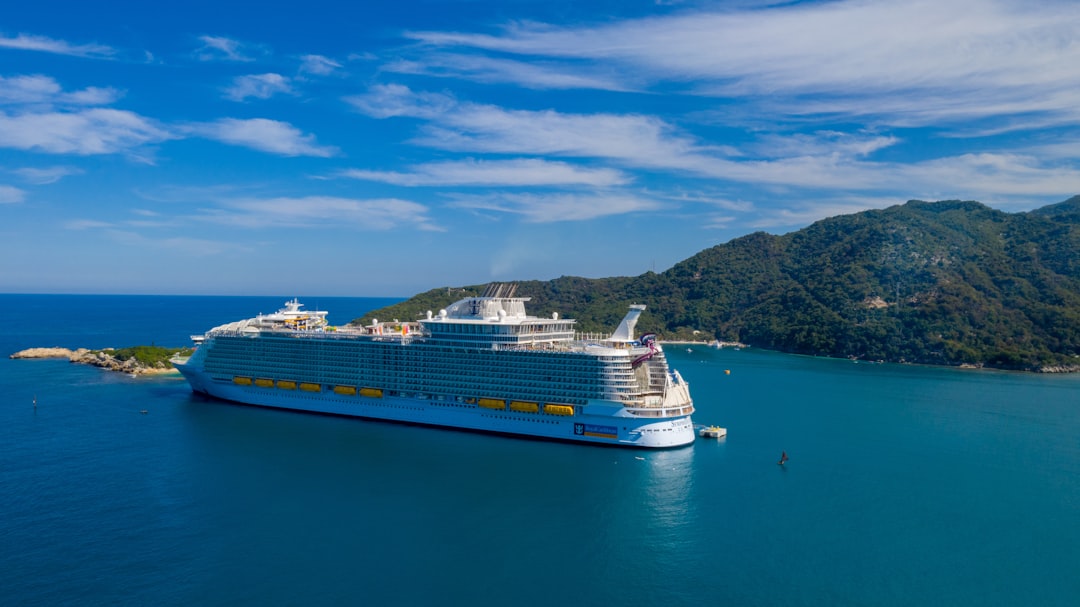The Drake Passage, a body of water that separates South America from Antarctica, is renowned for its tumultuous waters and breathtaking scenery. Stretching approximately 600 miles, this passage is often considered one of the most challenging maritime routes in the world. It is here that the Atlantic and Pacific Oceans converge, creating a unique environment characterized by strong currents and unpredictable weather patterns.
The passage is not only a vital route for maritime navigation but also a significant ecological zone, teeming with marine life and offering a glimpse into the raw beauty of nature. Travelers venturing through the Drake Passage are often struck by its stark contrasts. On one hand, the waters can be notoriously rough, with waves that can reach heights of over 30 feet during storms.
On the other hand, the passage is a gateway to some of the most pristine landscapes on Earth, including the icy shores of Antarctica. The experience of crossing the Drake Passage is often described as both exhilarating and humbling, as it serves as a reminder of nature’s power and beauty. For many adventurers, this journey is not merely a means to an end but an integral part of their Antarctic expedition.
Key Takeaways
- The Drake Passage is a body of water between South America’s Cape Horn and the South Shetland Islands of Antarctica, known for its rough seas and unpredictable weather.
- When choosing a cruise for the Drake Passage, consider factors such as the ship’s size, amenities, and itinerary to ensure a comfortable and enjoyable journey.
- Packing essentials for the journey include warm clothing, waterproof gear, sturdy footwear, and seasickness medication.
- Preparing for rough seas involves staying hydrated, getting plenty of rest, and familiarizing yourself with the ship’s safety procedures.
- Wildlife spotting in the Drake Passage offers the chance to see a variety of marine life, including whales, seals, and seabirds, so be sure to have binoculars and a camera ready.
Choosing the Right Cruise
Selecting the right cruise for a journey through the Drake Passage is crucial for ensuring a memorable experience.
Some travelers may prioritize luxury and opt for high-end vessels equipped with spacious cabins and gourmet dining options, while others may seek a more rugged adventure aboard smaller expedition ships that allow for closer encounters with wildlife and ice formations.
When choosing a cruise, it is essential to consider the duration of the trip, as well as the specific destinations included in the itinerary. Some cruises may focus solely on the passage itself, while others may include stops at various Antarctic islands or research stations. Additionally, travelers should pay attention to the size of the ship; smaller vessels can navigate tighter spaces and offer more intimate experiences, while larger ships may provide more amenities but can be limited in their ability to explore remote areas.
Ultimately, the right cruise will align with the traveler’s interests and expectations, ensuring an unforgettable journey through this remarkable region.
Packing Essentials for the Journey

Packing for a cruise through the Drake Passage requires careful consideration of both comfort and practicality. The unpredictable weather conditions in this region necessitate layers of clothing that can be easily added or removed as temperatures fluctuate. Travelers should prioritize waterproof and windproof outer layers, such as jackets and pants, to protect against rain and spray from the ocean.
Insulating layers made from materials like fleece or down are also essential for keeping warm during chilly excursions. In addition to clothing, travelers should not overlook other essential items. A good pair of binoculars can enhance wildlife viewing opportunities, allowing passengers to spot seals, whales, and seabirds from a distance.
Sunscreen and sunglasses are also important, as UV rays can be intense even in cold climates.
By preparing thoughtfully, travelers can ensure they are well-equipped to enjoy every moment of their adventure.
Preparing for Rough Seas
| Metrics | Data |
|---|---|
| Number of life jackets | 100 |
| Emergency rations | 50 days |
| Emergency radio communication | Yes |
| Number of crew members | 10 |
The Drake Passage is infamous for its rough seas, and preparation is key to navigating this challenging environment. Understanding that conditions can change rapidly is essential for travelers embarking on this journey. It is advisable to familiarize oneself with the ship’s safety protocols and emergency procedures before setting sail.
Many cruise lines provide briefings on what to expect during the crossing, including tips on how to stay safe and comfortable while at sea. To mitigate discomfort during rough seas, travelers can take proactive measures such as choosing cabins located in the middle of the ship, where motion is less pronounced. Additionally, it may be beneficial to bring along motion sickness remedies or consult with a healthcare professional about preventative medications.
Staying hydrated and eating light meals can also help maintain comfort levels during turbulent crossings. By being prepared for rough seas, travelers can focus on enjoying the breathtaking views and unique experiences that await them.
Wildlife Spotting in the Drake Passage
One of the most thrilling aspects of traveling through the Drake Passage is the opportunity to observe an array of wildlife in their natural habitat. The waters are rich in nutrients, attracting a diverse range of marine life, including seals, dolphins, and various species of whales. Passengers often find themselves captivated by sightings of humpback whales breaching or orcas gliding gracefully through the waves.
Birdwatching is equally rewarding, with seabirds such as albatrosses and petrels soaring overhead. Cruise operators typically offer guided excursions focused on wildlife spotting, providing expert insights into the behaviors and habitats of these fascinating creatures. Naturalists onboard share their knowledge about the delicate ecosystems of the region and help passengers identify different species.
For many travelers, these encounters with wildlife become some of the most cherished memories of their journey through the Drake Passage.
Onboard Activities and Entertainment

While crossing the Drake Passage can be an adventure in itself, cruise lines often provide a variety of onboard activities to keep passengers engaged during their journey. Educational lectures led by experts in marine biology, geology, and history offer valuable insights into the unique environment surrounding them. These presentations not only enhance understanding but also foster a deeper appreciation for the natural wonders encountered during excursions.
In addition to educational opportunities, many cruises feature recreational activities such as yoga classes or fitness sessions to help passengers stay active while at sea. Social events like cocktail hours or themed dinners provide opportunities for travelers to connect with fellow adventurers and share stories from their journeys. With a range of activities available, passengers can find ways to relax and enjoy their time onboard while eagerly anticipating their next adventure in Antarctica.
Safety Precautions for the Journey
Safety should always be a top priority when embarking on a cruise through the Drake Passage. Cruise lines are well-equipped to handle emergencies and have established protocols in place to ensure passenger safety throughout the journey. Before departure, travelers are typically briefed on safety measures, including life jacket usage and evacuation procedures.
Familiarizing oneself with these protocols can provide peace of mind during rough crossings. In addition to following onboard safety guidelines, travelers should also take personal precautions to minimize risks associated with sea travel. Wearing appropriate footwear with good grip can help prevent slips on wet decks, while securing personal belongings can reduce hazards during turbulent conditions.
Staying informed about weather updates and heeding crew advice regarding excursions or activities will further enhance safety during this remarkable journey.
Tips for Dealing with Seasickness
Seasickness is a common concern for many travelers crossing the Drake Passage due to its notorious waves and swells. However, there are several strategies that can help mitigate discomfort during rough seas. One effective approach is to choose accommodations wisely; cabins located in the middle of the ship tend to experience less motion than those at either end.
Additionally, spending time on deck can provide fresh air and a change of scenery that may alleviate symptoms. Travelers may also consider using over-the-counter medications or natural remedies designed to combat motion sickness. Ginger candies or acupressure wristbands have been known to provide relief for some individuals.
Eating light meals before embarking on excursions can help settle stomachs as well. By being proactive about seasickness management, travelers can focus on enjoying their adventure rather than being sidelined by discomfort.
Capturing the Beauty of the Southern Ocean
The Southern Ocean surrounding Antarctica is renowned for its stunning landscapes and unique geological features. From towering icebergs to dramatic mountain ranges, this region offers countless opportunities for breathtaking photography. Travelers are encouraged to bring high-quality cameras equipped with zoom lenses to capture distant wildlife or expansive vistas from their ship or during land excursions.
In addition to traditional photography, many travelers find joy in documenting their experiences through journaling or sketching. Taking time to reflect on each moment allows for deeper connections with the environment and enhances overall enjoyment of the journey. Whether capturing images of playful seals or majestic glaciers, documenting these experiences creates lasting memories that travelers can cherish long after their adventure concludes.
Making the Most of Land Excursions
Land excursions during a cruise through the Drake Passage provide invaluable opportunities to explore Antarctica’s unique landscapes and ecosystems up close. These excursions often include guided hikes on snow-covered terrain or visits to research stations where scientists study climate change and wildlife conservation efforts. Engaging with knowledgeable guides enhances understanding of this fragile environment while fostering appreciation for its beauty.
Travelers should take advantage of every opportunity presented during land excursions by participating actively in discussions and asking questions about local flora and fauna. Additionally, being prepared with appropriate gear—such as waterproof boots and insulated clothing—ensures comfort while exploring diverse terrains. By immersing themselves fully in these experiences, travelers can create unforgettable memories that highlight the wonders of Antarctica.
Reflecting on the Journey: Post-Cruise Considerations
As travelers conclude their journey through the Drake Passage and return home, it is essential to take time for reflection on their experiences. Many find that journaling about their adventures helps solidify memories while providing an opportunity to process emotions related to their journey. Sharing stories with friends and family can also enhance connections and inspire others to embark on similar adventures.
Additionally, travelers may wish to consider how their experiences have influenced their perspectives on environmental conservation and climate change issues facing our planet today. The beauty witnessed in Antarctica serves as a powerful reminder of nature’s fragility and resilience. By engaging in discussions about sustainability or supporting conservation efforts post-cruise, travelers can contribute positively toward preserving these remarkable ecosystems for future generations.
In conclusion, traversing through the Drake Passage offers an unparalleled adventure filled with breathtaking landscapes, diverse wildlife encounters, and opportunities for personal growth. By understanding what lies ahead—choosing the right cruise, preparing adequately for rough seas, engaging in onboard activities, and reflecting on their experiences—travelers can ensure that their journey becomes not just a trip but a transformative experience that resonates long after they return home.
If you’re planning a Drake Passage cruise and are curious about the waves you might encounter, you might find it helpful to read more about the experiences of other travelers. An article on MyGeoQuest provides insights into the challenges and beauty of navigating this infamous stretch of water. You can explore more about the Drake Passage and its waves by visiting this related article on MyGeoQuest. This resource offers valuable information for anyone considering this adventurous journey.
WATCH NOW! Drake Passage: Earth’s Deadliest Waters Revealed
FAQs
What is the Drake Passage?
The Drake Passage is the body of water between the southern tip of South America and the northern tip of the Antarctic Peninsula. It is known for its rough seas and challenging sailing conditions.
What are Drake Passage cruise waves?
Drake Passage cruise waves refer to the large and powerful waves that are commonly experienced by ships crossing the Drake Passage. These waves are often caused by strong winds and the convergence of the Atlantic, Pacific, and Southern oceans.
Are Drake Passage cruise waves dangerous?
Yes, Drake Passage cruise waves can be dangerous due to their size and power. Ships crossing the Drake Passage may encounter rough seas and heavy swells, which can lead to a bumpy and potentially hazardous sailing experience.
How can passengers prepare for Drake Passage cruise waves?
Passengers can prepare for Drake Passage cruise waves by taking motion sickness medication, packing appropriate clothing for cold and wet conditions, and following safety instructions provided by the cruise ship crew. It is also advisable to secure personal belongings and be cautious while moving around the ship during rough seas.
Are there any benefits to experiencing Drake Passage cruise waves?
While Drake Passage cruise waves can be challenging, they also offer a unique and exhilarating experience for adventurous travelers. The opportunity to witness the power of the ocean and navigate through rough seas can be a memorable and rewarding aspect of a cruise through the Drake Passage.
